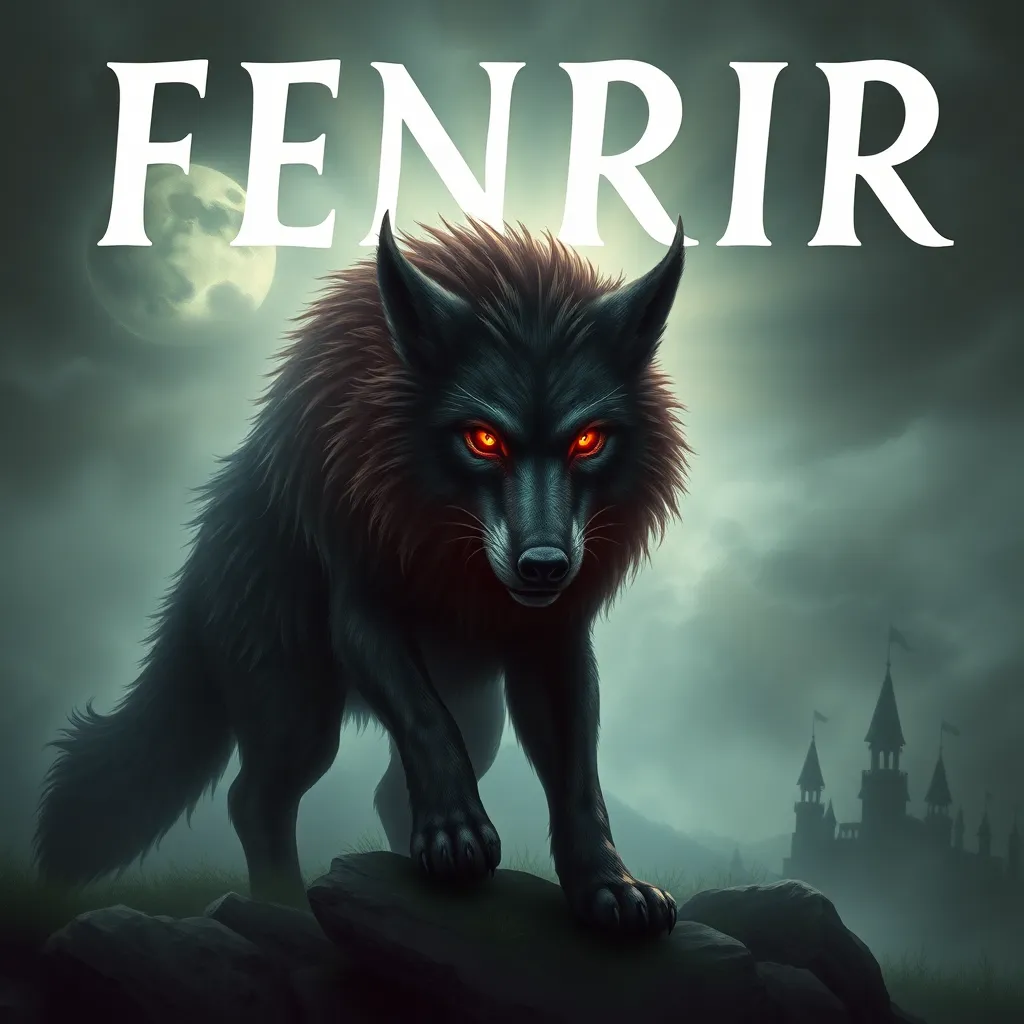Fenrir in Scandinavian Folklore: The Wolf’s Local Legends and Traditions
I. Introduction to Fenrir
Fenrir, the monstrous wolf of Norse mythology, holds a significant place in the tapestry of Scandinavian folklore. His narrative intertwines themes of fate, chaos, and power, making him a compelling figure in the tales of the gods and their adversaries.
The symbolism of the wolf in Scandinavian culture is multifaceted. Wolves are often seen as both protectors and predators, representing the dual nature of existence. As a creature of the wild, the wolf embodies freedom and ferocity, yet also loyalty and family bonds, illustrating the complexity of nature itself.
This article aims to explore the local legends and traditions surrounding Fenrir, examining how his story has evolved over time and the impact he has had on Scandinavian culture.
II. The Mythological Origins of Fenrir
Fenrir is not just any wolf; he is a child of Loki, the trickster god, and the giantess Angerboda. His lineage is steeped in foreboding prophecies that foretell doom for the gods. This prophecy plays a pivotal role in the Aesir-Vanir conflict, where Fenrir is viewed as a harbinger of destruction and chaos.
The binding of Fenrir is a crucial event in Norse mythology. The gods, fearing his immense power, decided to bind him with the magical chain Gleipnir, which was crafted from the sound of a cat’s footfall, the beard of a woman, the roots of a mountain, the sinews of a bear, the breath of a fish, and the spittle of a bird. This act not only signifies the gods’ attempts to control chaos but also foreshadows Fenrir’s role in Ragnarok, the end of the world.
III. Fenrir in Poetic Edda and Prose Edda
The Poetic Edda and Prose Edda are the primary sources of Norse mythology, containing rich narratives about Fenrir. In these texts, Fenrir is depicted as a looming threat to the gods, especially during Ragnarok, where he is foretold to confront Odin and devour him.
Key references in the Poetic Edda illustrate the fear and respect that Fenrir commands. One of the most notable passages describes his eventual release from bondage and the havoc that will ensue. The narrative of Ragnarok emphasizes Fenrir’s role as a catalyst for destruction, highlighting the inevitability of fate and the cyclical nature of time in Norse belief.
Literary analysis of these sources reveals varying interpretations of Fenrir’s character, ranging from a monstrous villain to a tragic figure bound by fate. This duality adds depth to his story, making him a complex symbol in Norse mythology.
IV. Local Legends and Variations
Across Scandinavia, regional differences in Fenrir’s depiction enrich the mythos surrounding him. In some tales, he is seen merely as a beast to be feared, while in others, he is portrayed with a level of sympathy as a victim of divine manipulation.
Comparison with similar creatures in local folklore reveals common themes of chaos and destruction. For instance:
- Sköll and Hati: The wolves that chase the sun and moon, representing the eternal struggle between light and darkness.
- Fenriswolf: A name sometimes used for Fenrir, which emphasizes his nature as a wolf of destruction.
Notable tales, such as the story of Fenrir’s binding or his eventual role in Ragnarok, carry significant cultural weight, serving as cautionary tales about hubris and the consequences of defiance against fate.
V. Fenrir as a Symbol of Chaos and Destruction
Fenrir embodies the duality of chaos: he is both fearsome and protective. On one hand, he is a creature of destruction, capable of unleashing havoc during Ragnarok. On the other hand, he represents the protective instincts of a wolf, defending his own and challenging the gods’ authority.
In the Scandinavian worldview, chaos is not merely disorder but a fundamental aspect of existence. Fenrir’s representation in contemporary art and media often highlights this duality, showcasing him as a figure of both fear and respect.
VI. Rituals and Traditions Associated with Fenrir
Folk practices and celebrations linked to Fenrir often center around themes of nature and the changing seasons. Festivals may invoke the spirit of Fenrir, seeking protection from his chaotic nature while honoring his place in the ecosystem.
Rituals that invoke Fenrir’s spirit can include:
- Storytelling sessions during winter solstice, celebrating the cyclical nature of life.
- Offerings in the woods, asking for guidance and protection from the wild.
The impact of these traditions on modern Scandinavian culture is evident in the continued reverence for nature and the wild, with Fenrir serving as a reminder of the power and unpredictability of the natural world.
VII. Fenrir in Modern Popular Culture
Fenrir’s representation in literature, film, and games reflects a growing interest in Norse mythology. Modern adaptations often depict him as a misunderstood creature or an anti-hero, emphasizing his tragic lineage and the inevitability of his fate.
The evolution of Fenrir’s image in contemporary society showcases his adaptability as a character, resonating with modern audiences who see in him the struggles against authority and the chaos of existence. Examples include:
- The Marvel Comics and Cinematic Universe, where Fenrir is portrayed in various forms, often as a creature of immense power.
- Video games like “God of War” and “Assassin’s Creed Valhalla,” which incorporate Fenrir into their narratives, emphasizing themes of destiny and conflict.
This influence of Norse mythology on global pop culture highlights Fenrir’s enduring legacy and the fascination with his story.
VIII. Conclusion
Fenrir’s legacy in Scandinavian folklore is profound, symbolizing chaos, fate, and the natural world’s unpredictable nature. His story serves as a reminder of the importance of preserving local legends, as they provide insight into cultural values and beliefs.
As we reflect on Fenrir’s place in cultural narratives, it becomes clear that his story will continue to evolve, resonating with new generations and adapting to contemporary themes. The future of Fenrir in cultural narratives and traditions remains bright, as he embodies the age-old struggle between order and chaos.



